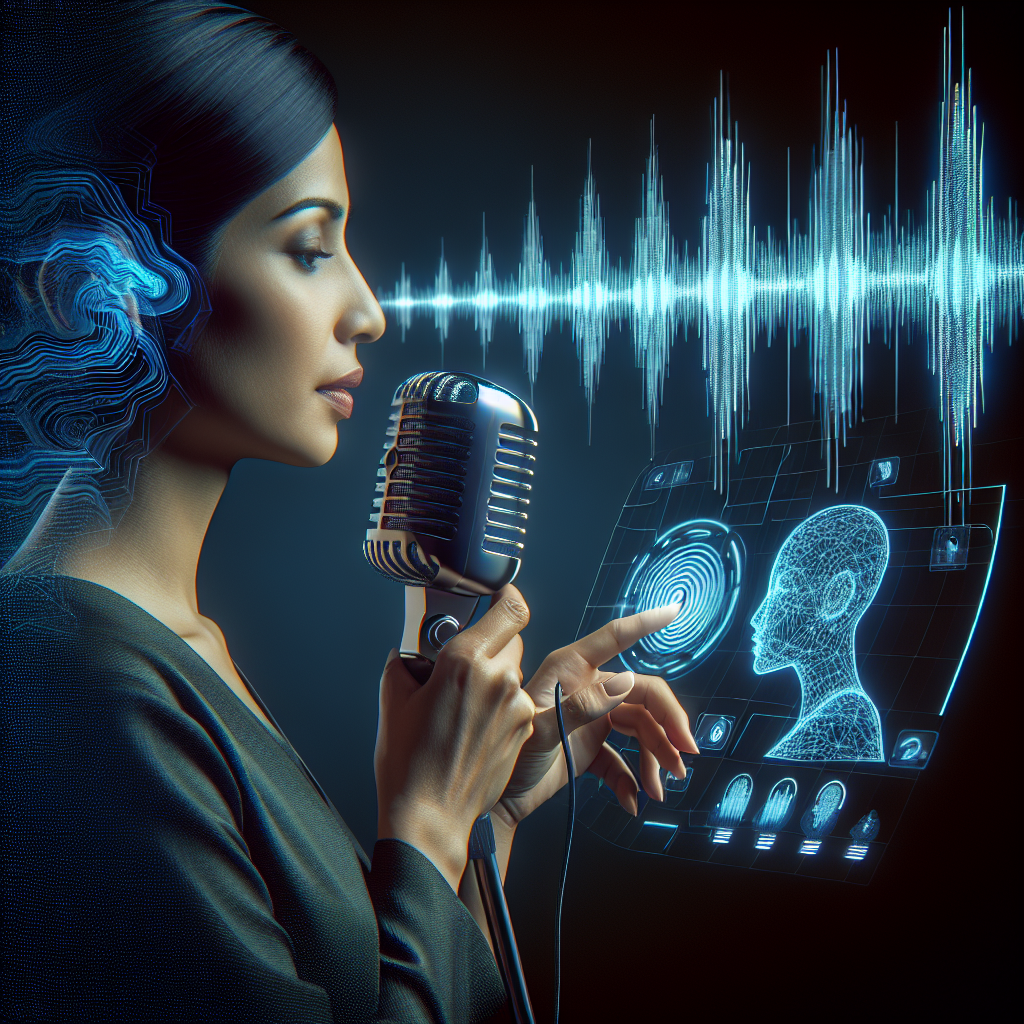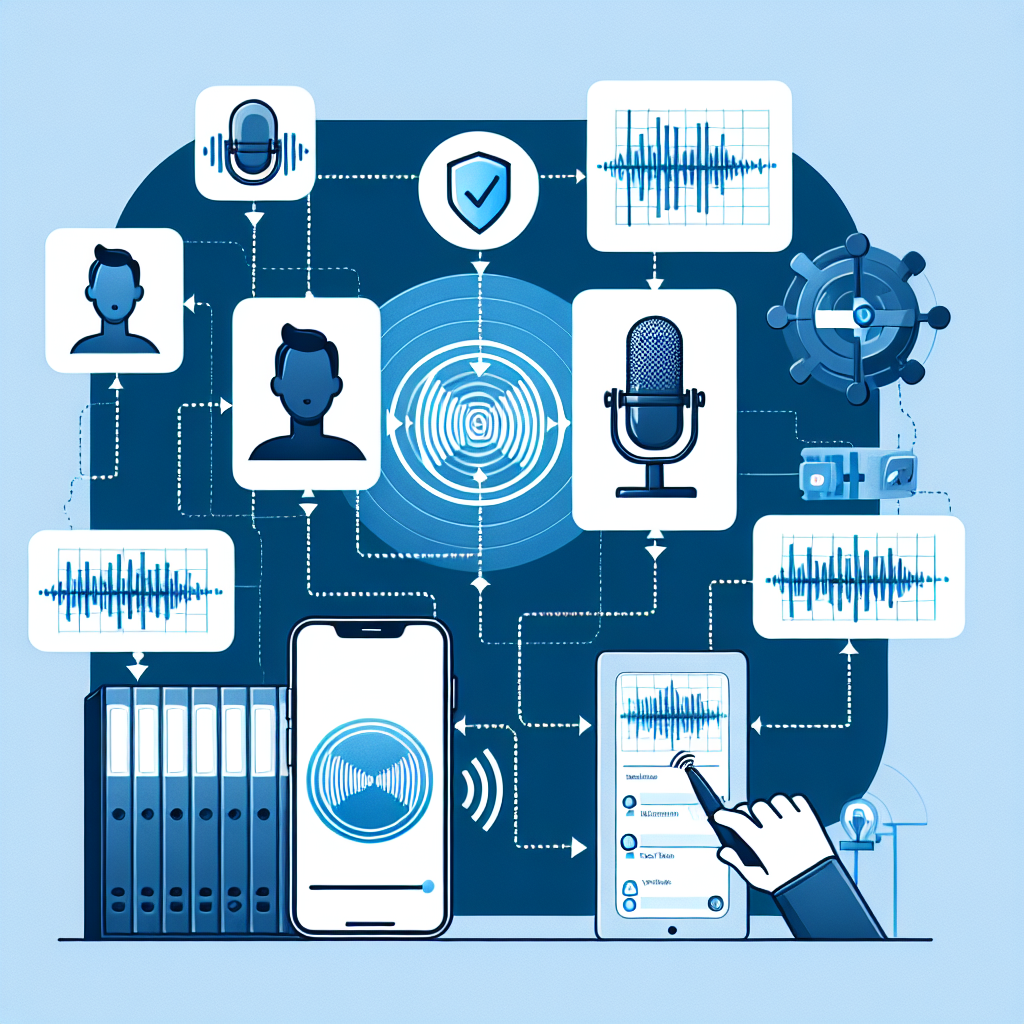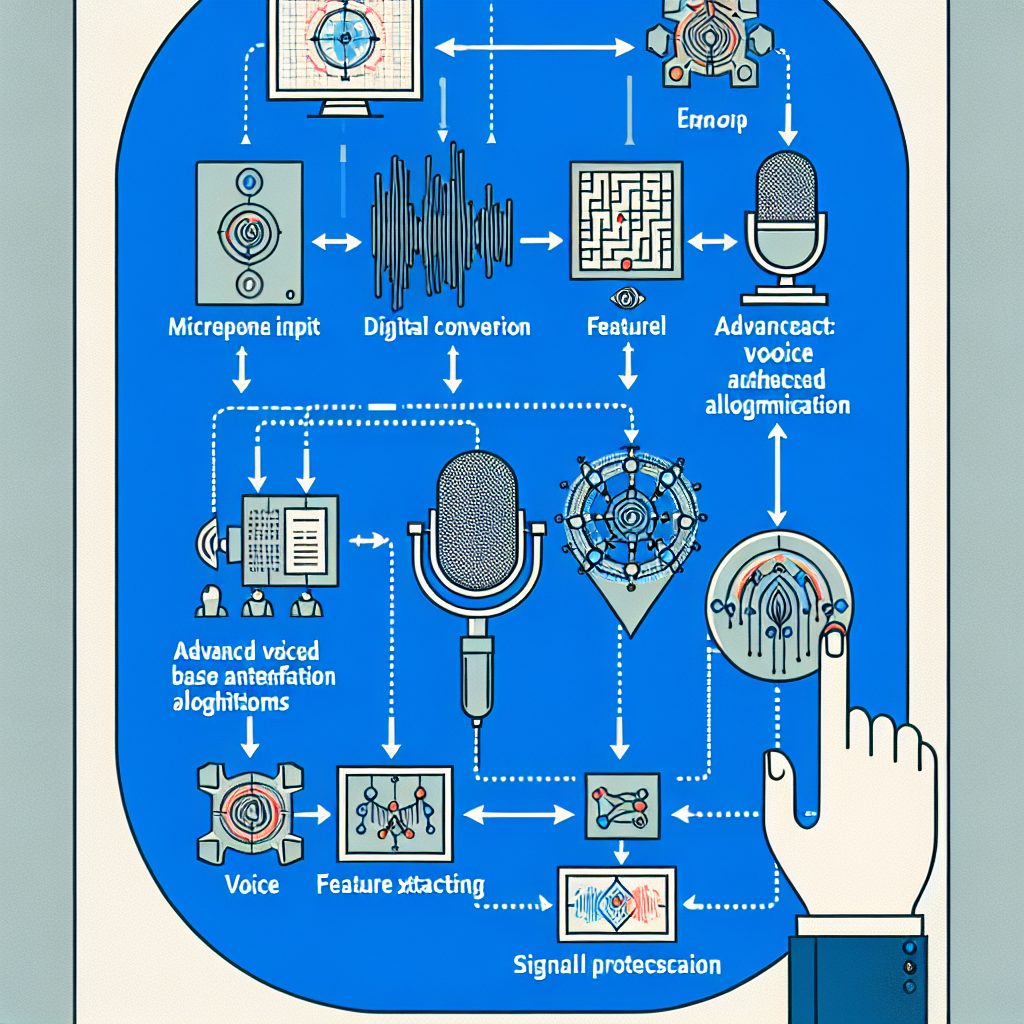
As technology continues to evolve at an unprecedented pace, our reliance on it increases significantly. For businesses worldwide, this dependency is captured in their operations, ranging from production to distribution processes. As beneficial as these technological advancements are, they inadvertently pave the way for sophisticated malfeasance such as producing counterfeit goods. However, the rise of innovative solutions like voice authentication has surfaced as a hopeful contender in combating this issue.

For an understanding of the voice authentication technology, it's pivotal to recognize its core functionality. This technology works by extracting unique features from a customer's voice to create a digital representation. This information, when combined with Artificial Intelligence and Machine Learning algorithms, can confirm the identity of an individual.
Although voice authentication may sound futuristic, it's not an entirely new concept. The research and experimentation in this field started as early as the 1960s. What sets the contemporary applications apart is the integration of AI and Machine Learning, making the systems more reliable, efficient, and versatile.
Finding its application in sectors like banking, healthcare, and now retail, voice authentication helps improve security and combat fraud. In the context of product authenticity, voice-based systems have a transformative potential. Businesses can securely connect consumers and genuine products, lowering the chances of counterfeit goods infiltrating the market. Furthermore, as these systems simply require a device with a microphone and web accessibility, they can be conveniently adapted into existing operations, leveraging the businesses' reach in remote areas.
While this revolutionary technology is flourishing, it's still facing challenges on various fronts. To make voice authentication a universally acceptable and reliable solution, industries need to surmount hurdles like language variations, background noise, and user comfort in sharing voice data.
Voice-Based Product Authentication is a cutting-edge, user-friendly, and highly effective method for ensuring product authenticity. This technical process harnesses the power of voice recognition technology to battle the increasing menace of counterfeit goods.
Voice recognition, also known as speaker recognition, uses unique characteristics in each individual's voice to verify their identity. These variances can be in pitch, accent, speech speed, pronunciation, and even the shape and size of one’s vocal tract. By implementing algorithms and statistical models, voice recognition software can match an audio sample to a specific individual.
Primarily, this technology operates in two modes: Text-Dependent and Text-Independent. Text-Dependent mode requires the person to say a specific phrase or password, whereas in Text-Independent mode, the individual can speak freely and the system will still validate their identity. These advanced techniques furnish an additional layer of security, further strengthening the authentication process.
For product security, voice-based authentication is deployed as a mobile application. When a user purchases a product, they're required to authenticate the product by speaking into the app. The voice sample is then conveyed to the manufacturer's server where it's compared with the pre-recorded authentic voice signature. If successful, a confirmation of product authenticity is sent back to the user. This procedure leverages IoT and cloud technologies, thereby offering real-time product validation anywhere and anytime.
Compatibility with a variety of digital devices further extends the adoption of voice-based product authentication. As it necessitates no extra hardware, the cost is reduced significantly, making it an attractive solution for businesses of all sizes. With the ubiquity of smartphones and increasing incidence of counterfeit goods, this sector is bound to witness exponential growth.
Overall, Voice-Based Product Authentication stands at the forefront of product security, presenting an innovative solution to the counterfeit issue.
In today's technologically advanced world, Voice-Based Product Authentication has emerged as a cutting-edge solution to combat the pervasive issue of counterfeit goods. The technology provides several critical advantages over traditional security measures, offering a seamless bridge between enhanced security features and improved consumer interaction.

While traditional security measures such as barcodes, holograms, or QR codes provide some level of protection, they are often susceptible to replication by counterfeiters. Conversely, Voice Authentication leverages unique voice patterns, making it much harder for fraudsters to replicate or bypass. A study by Stanford University shows that every individual's voice has unique features, suggesting the efficacy of this method.
Furthermore, voice authentication provides an engaging, interactive, and user-friendly solution. It's as simple as speaking into your device, and the system handles all the security aspects automatically. This ease-of-use vastly enhances customer experience, as indicated by a report from Deloitte.
Notably, voice authentication enables real-time verification. This means goods can be authenticated during purchase, eliminating delays associated with manual verification. For instance, a research by PwC highlights how instantaneous validation could potentially save millions in lost revenue due to counterfeit products.
To further build on the security, Voice Authentication can also be combined with other biometrics or a multi-factor authentication process that further strengthens the security. A Gartner report emphasises the increased resilience of a system with multi-layered authentication safeguards.
In conclusion, voice-based product authentication provides a more secure, user-friendly, and efficient alternative to traditional measures. It's an innovative solution that not only protects businesses but also enhances the overall customer experience
.The rapidly evolving field of product authentication has witnessed a remarkable application in voice-based authentication. Pioneering businesses are using this technology to fortify their product verification process and diminish the incidence of counterfeit goods. Let's analyze a couple of successful case studies to comprehend the impact of voice-based authentication.
In the financial sector, Barclays have successfully implemented voice-based biometrics to authenticate their customers. With this technology, each customer's voice print is unique and cannot be tampered or duplicated, hence, it becomes a strong deterrent against fraudulent activities. It has expedited the authentication process, making it user-friendly, efficient and more secure than the conventional text-based passwords. This technology has established Barclays as a forerunner in embracing and advancing in novel technology for fraud prevention.
Simultaneously, in the field of high-value collectibles and art, Verisart is using voice-based authentication in combination with blockchain technology. The users can authenticate the artwork with a voice note, confirming the legitimacy of the item. With every reselling of the artwork, the voice of the seller is added into the blockchain, ensuring the traceability and authenticity of the art piece. This technology has given artists and collectors a trustworthy method of trading, where counterfeit goods can be easily identified and prevented.
Lastly, security company Nuance Communications brings forth biometric voice recognition technology that is effective in separating legitimate users from fraudulent ones. Their voice-based authentication solutions have been influential in various sectors including banking, healthcare, and telecom, marked by a significant reduction in fraudulent incidents.
To summarize, voice-based authentication has emerged as a robust tool to combat counterfeit goods, protect brand value, and provide a seamless user experience. Businesses that have adopted this approach are witnessing a substantial decline in the incidences of fraudulent activities. As these technologies continue to evolve and mature, we can expect to see more sectors championing the use of voice-based product authentication.
As the adoption of voice-based product authentication grows, companies encounter a myriad of unique challenges. The first major hurdle is the complexity of voice biometrics. Implementing a highly accurate voice authentication system often requires significant computational resources and technically sound methodologies, as voices have multiple characteristics that can change daily such as pitch, speed, and even accent changes. Further to this, disruptions due to external noise can impede the system’s ability to accurately identify a legitimate voice command. Solutions to this include leveraging advanced voice analysis algorithms that consider these variables and noise reduction techniques.

Another prominent challenge is authentication security. With the rise in the sophistication of attacks, such as deepfake audio technologies, voice-based authentication systems need to be extremely secure. Systems need to detect attempted breaches and refine the detection process consistently to protect against counterfeit goods.Countermeasures against deepfake attacks and advancements in machine learning can potentially mitigate this challenge.
Lastly, gaining user acceptance can be a significant hurdle. Despite the technologically advanced nature of voice authentication, it is essential that users find it easy to use and trust the security of the system. Educating consumers about the efficiency and security of voice authentication could help in accelerating user acceptance.
In conclusion, while the challenges associated with voice-based product authentication are substantial, solutions exist that can help companies overcome these barriers. By focusing on refining voice analysis technologies, heightening security features, and promoting user acceptance, companies can leverage voice authentication to effectively combat counterfeit goods.
As we step into the future, the most pivotal role in combating counterfeit goods could conceivably be played by voice-based product authentication. This novel approach to authentication, while already granting considerable benefits in its current applications, is poised to become even more potent with future technological advancements. Notably, predictive analytics combined with advanced deep learning algorithms may drastically augment voice-based product's capability to authenticate goods.
In the forthcoming years, several industries are predicted to adopt and make use of these technologies for authentication. For instance, the pharmaceutical industry, where counterfeit drugs pose a severe threat to public health, could benefit immensely from voice-based product verification. Additionally, sectors like retail and luxury goods also stand to gain significantly as they grapple with the widespread issue of knockoffs.
Furthermore, the proliferation of smart home devices, such as smart speakers, presents a golden opportunity for the evolution of voice authentication. As these devices become ubiquitous, there is potential for voice-based shopping to become the norm. Consequently, the integration of robust voice-based product authentication technologies may become an essential safeguard in such a scenario.
However, as we venture into this promising new frontier of voice authentication, it will also be crucial to address the privacy concerns that inevitably arise. Protection of individual's voice data will be paramount with the growing utilization of this technology. Hence, future enhancements in voice authentication must also include robust data protection mechanisms to ensure user confidence and trust.
In conclusion, the future of voice-based product authentication looks promising with potential widespread applications across multiple industries. By leveraging predictive analytics, machine learning, and rigorous data protection mechanisms, we can very well see a reduction in counterfeit goods and increase in safe and secure commerce - all powered by the sound of our voice. The future is indeed vocal.
Start your free trial for My AI Front Desk today, it takes minutes to setup!








